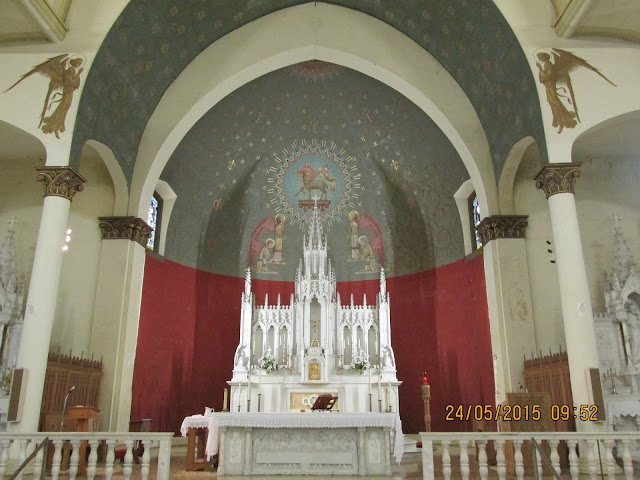Front view
Government
Street Presbyterian Church (GSPC) is located at 330 Government Street, Mobile,
Alabama-36602 USA.
Side view
Government Street Presbyterian Church is a part
of the Presbyterian Church of USA in the Presbytery of South Alabama.
Side view
GSPC was established in 1831. It is also called “the mother of Presbyterianism” along the Gulf Coast.
History of the Church:
Rev. John Warren of the New York Evangelical Society of Young Men established the church in the year 1822. He built a structure for worshiping at the corner of Government and Emmanuel streets, the present site of the Laclede Hotel. In 1829, Rev. John Warren donated the structure to Rev. Murdock Murphy of the Independent Protestant Church. The congregation was formerly organized in 1831 with 21 members. A frame building was erected in 1834 and the congregation gathered there.
Inner view
As the congregation grew in leap and bounds the need for construction of a bigger structure was felt. In 1836, land on the corner of Jackson and Government streets was purchased. The present church building in Greek revival architecture with handsomely proportioned portico and dignified ionic pillars was completed in 1839 at a cost of $60,000.
Rear view with inbuilt pipe organ
It had a steeple with a large clock imported from Liverpool and also contained the city’s fire bell. In 1852, the steeple was struck by lightning and hence it was removed never to be replaced.
Pulpit area with Corinthian capitals
The
dramatically lighted pulpit area is noteworthy for its exquisitely carved Corinthian
capitals and fine entablature. The ceiling is deeply coffered in a diamond pattern.
The original high-backed walnut pews are still in use.
 |
| Pipe organ |
The
Pipe Organ:
The
organ of 58 ranks was designed and built especially for this building byThe
Rieger-Kloss Pipe Organ Company of Krnv, Czech Republic.
The pipe organ is unique and
designed to look as if it were always a part of the building.
The Choir
The present congregation is of over 480
members. The church has worship services, Christian education, music and fine
arts, and urban ministries.
GSPC supports missionaries serving in Lesotho and Madagascar.The Church is
having a Music Library which lends music for use in worship services and
concerts in local churches.
The present site of the LA CLEDE Hotel at the corner of Government and Emmanuel streets where
Rev. John Warren first started the church in the year 1822.
Courtesy: GSPC Publications/web site














































